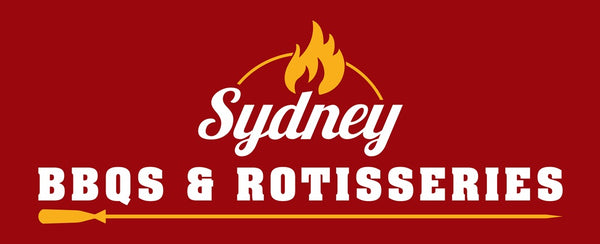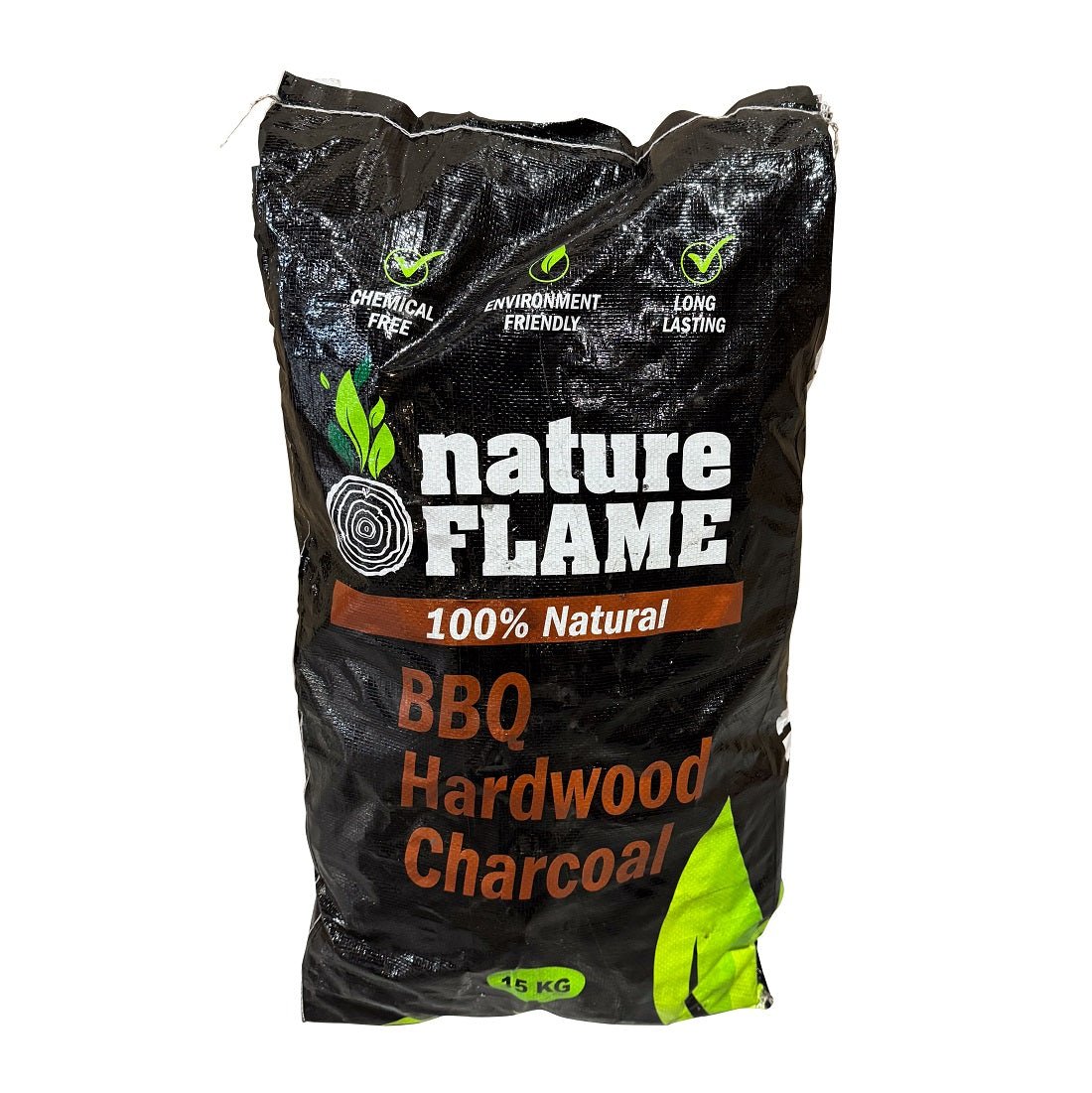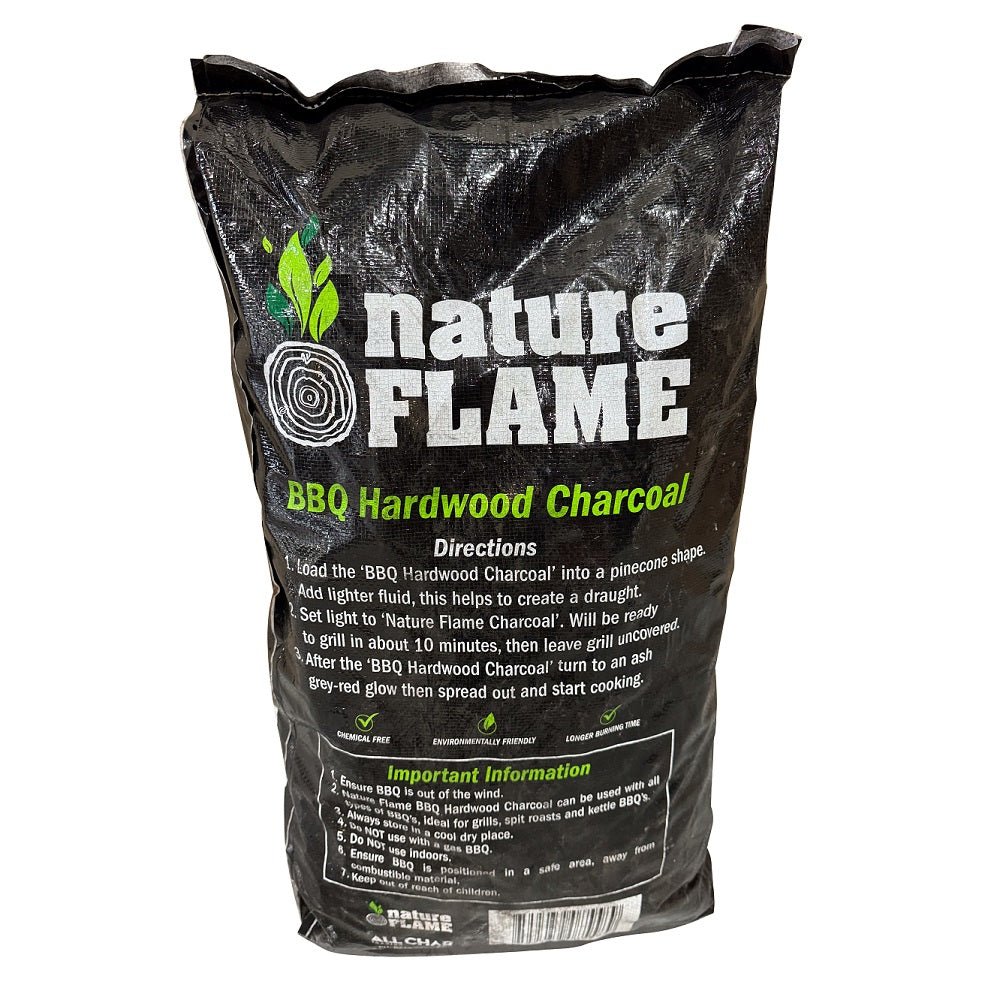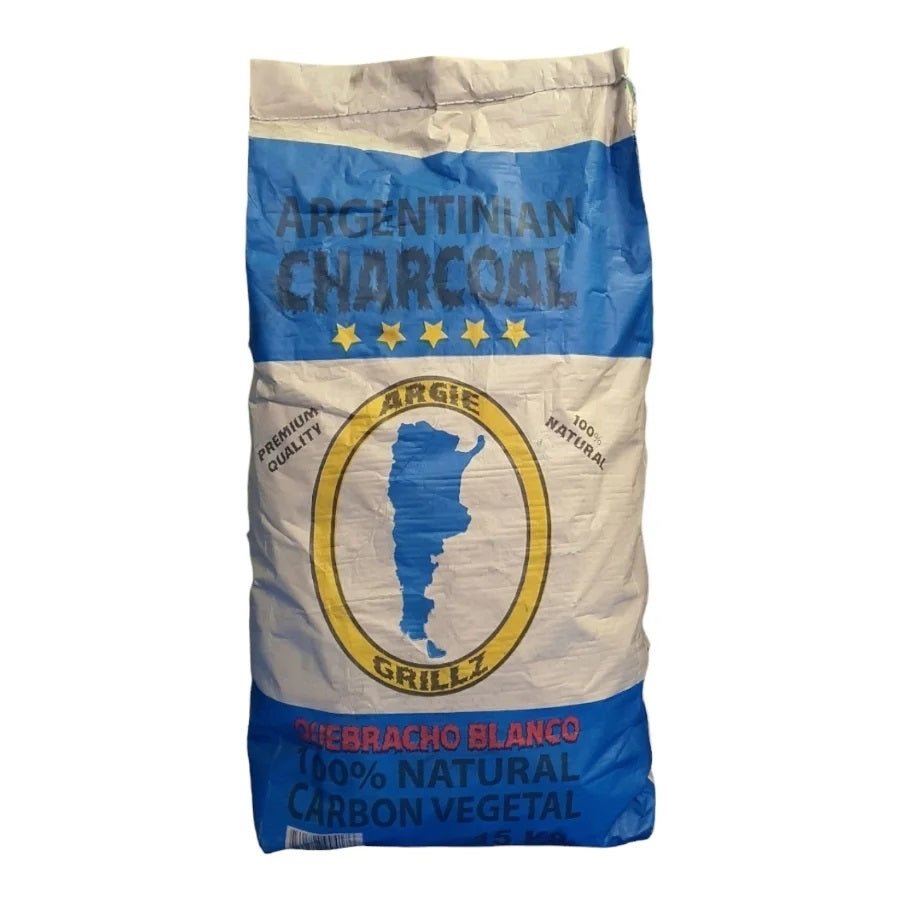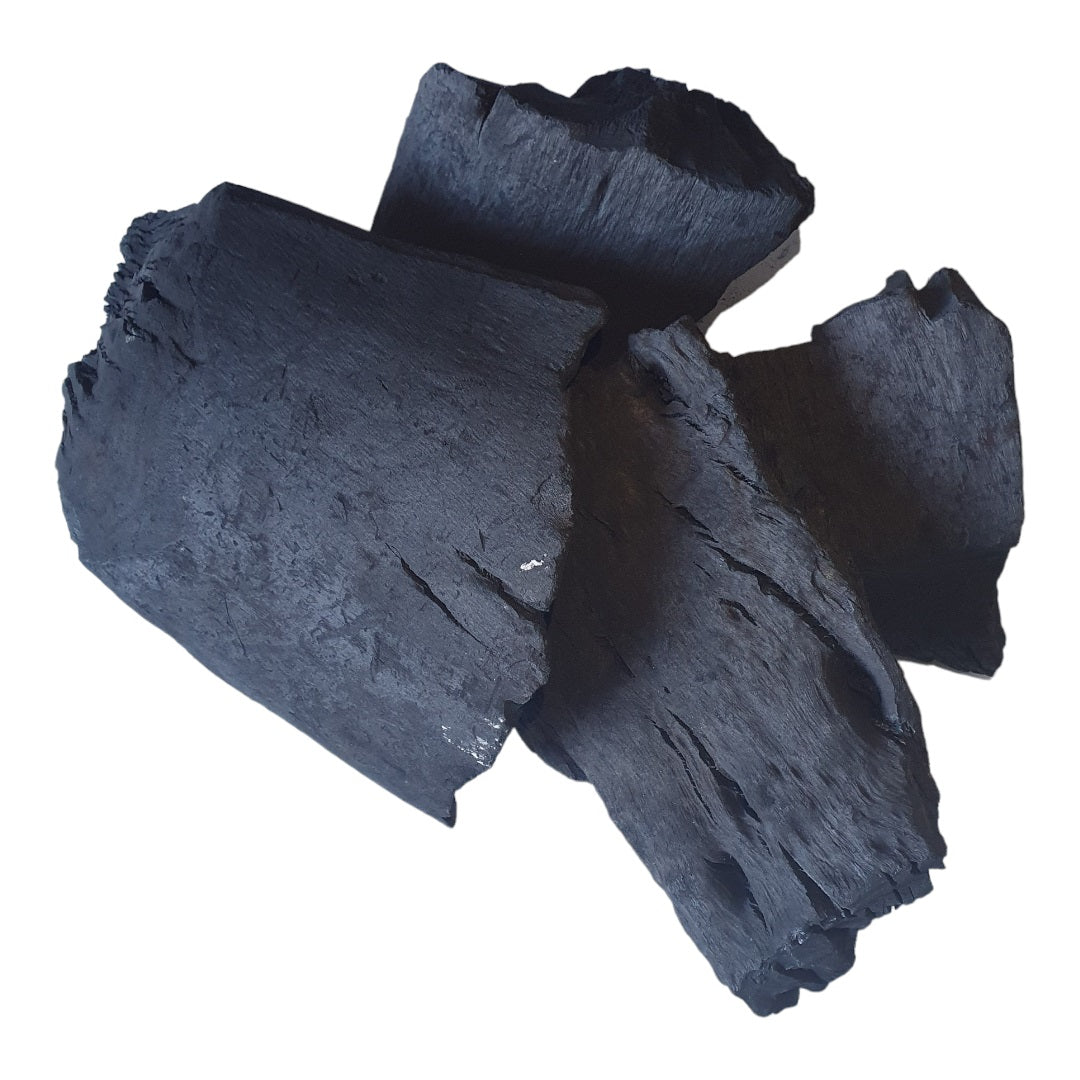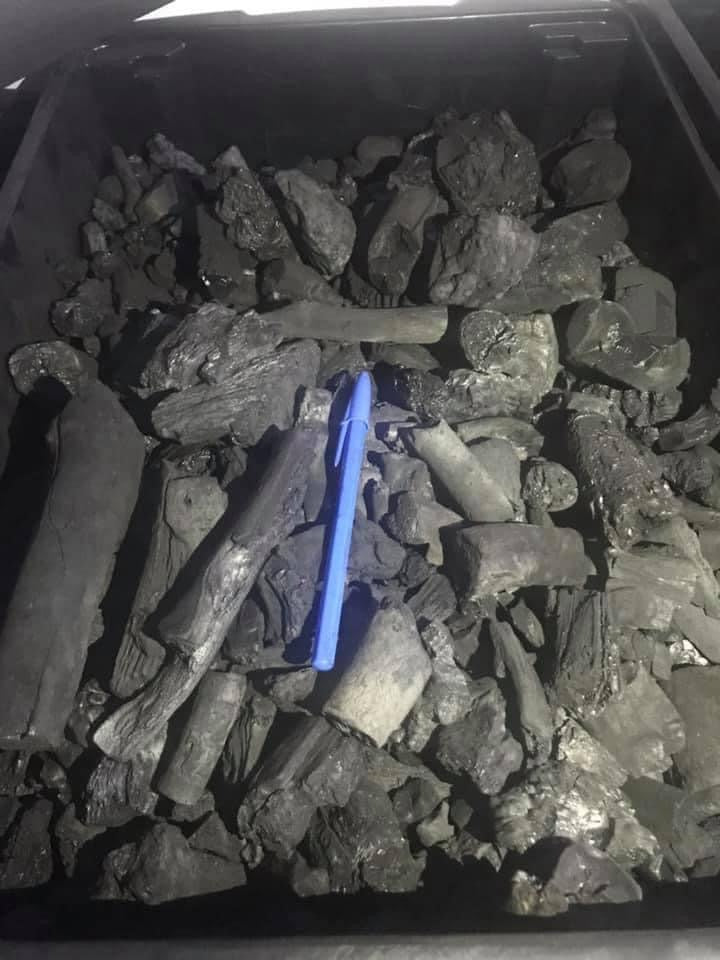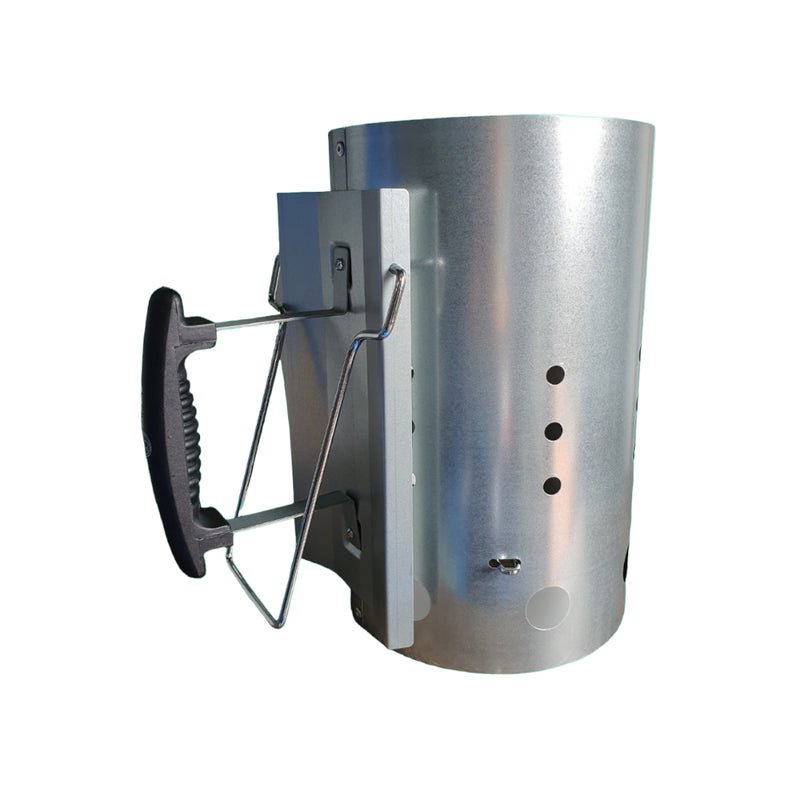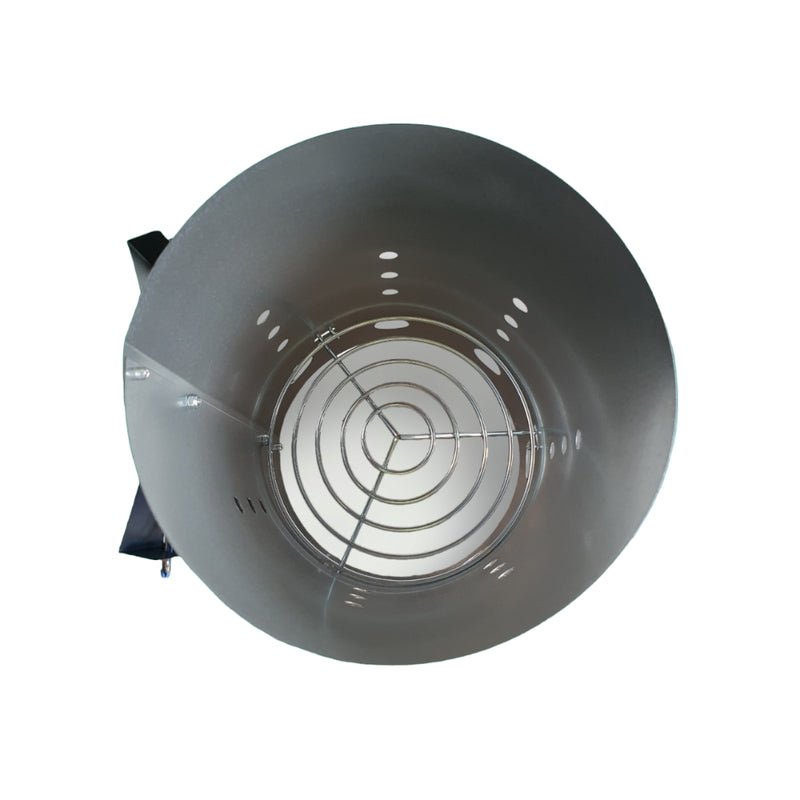Let customers speak for us
from 222 reviewsOrder was dispatched really fast, and the items were just as described on the website. I will be ordering from here again.

My initial experience with BBQs & Rotisseries was online. I purchased a couple of items, but needed them urgently so I collected from their store. The problem with online shopping is you don't see what you have purchased until you actually have the product. The items I purchased were not what I had expected, and the team at BBQs & Rotisseries were very flexible and ascertive to what I needed. Both management and staff were extremely helpful, and walked out of their store really happy with my purchases. The barbeque I hosted turned out so great that I received many compliments. So I sincerely appreciate the help and support I received from the BBQs & Rotisseries team.

Upgraded by mini spit roaster from Bunnings to a more robust motor with the benefit of AC/DC, in case I have time to go camping. Works a treat!!

Love not having a cord coming out of my BBQ.

Highly recommend the INKBIRD Instant Read Thermometer,
Have used it only once so far and I'm most impressed with the accurate reading making cooking so easy..❤️
Fast delivery and great service 👍 👌

Great rub, slight kick! Great colour

Enjoying a delicious charcoal barbecue is a quintessential summertime experience. The aroma of grilling food is simply irresistible. High-quality charcoal grills can elevate your cooking and entertaining. Finding affordable options makes it even better for everyone to partake in this joyful, communal activity. Savor the flavor and create lasting memories with perfectly grilled dishes.
Our family highly recommended Sydney BBQ's and Rostisseries for the ultimate BBQ selection experience at affordable prices. The team are very helpful and friendly in finding the right products for your needs!
Thank you once again to the Sydney BBQ's and Rotisseries team for your workmanship in acheivinv all of the above!

What a beautiful addition to our Kitchen. My husband was stunned at it's magnificence!

I feel sorry for those who don't know about this product...Kidding...
It is so amazing. We not only use it on our chicken wingettes over the coal, we also shake it on hot chips.. My Husband would use it on a Banana I am sure.. We use this product every week... It is so ADDICTIVE..

Great service, came wrapped watertight. Quick delivery, great charcoal. Will order from here again.
Thanks

Awesome product works perfectly in my Webber kettle, Highly recommended
Great store and service

Tried this charcoal chicken seasoning once and ever since just gotta keep ordering it. Its the best seasoning I've ever tried.

Recently viewed
At Sydney BBQs & Rotisseries, we understand that the type of charcoal you use can make a significant difference in your grilling results. That's why we have searched far and wide to offer our premium selection of lump charcoal. Our collection includes gidgee, mallee root, premium imported lump charcoal, Binchotan, and A-grade chunky mangrove suitable for the rotisserie. Each type of lump charcoal is carefully chosen for its unique qualities, ensuring you have the best fuel for your grilling needs. Discover the perfect lump charcoal to enhance your BBQ experience.
Gidgee Lump Charcoal
Gidgee lump charcoal is known for its high density and long burn time, making it an excellent choice for serious grillers. This BBQ charcoal is made from the gidgee tree also known as Acacia cambagei, is a species of Acacia native to Australia, It burns hotter and longer than many other types of charcoal, providing consistent heat for extended grilling sessions. Gidgee charcoal is perfect for searing
steaks and grilling larger cuts of meat, offering a rich, smoky flavour that enhances the taste of your food.
Mallee Root Lump Charcoal
Mallee root lump charcoal is another top choice for BBQ enthusiasts. Made from the roots of the mallee tree, this charcoal is renowned for its intense heat and minimal ash production. Mallee root charcoal lights quickly and maintains a steady temperature, making it ideal for a variety of grilling applications. Its natural, robust flavour pairs well with all types of meats and vegetables..
Premium Imported Lump Charcoal
Our premium imported lump charcoal includes high-quality hardwoods from Vietnam and Argentina. These charcoals are sourced from sustainably managed forests, ensuring an environmentally friendly grilling option. Imported lump charcoal
offers a consistent burn and exceptional heat output, perfect for both high-temperature grilling and low-and-slow smoking. The clean burn and subtle smoky flavour of this charcoal make it a versatile choice for any BBQ enthusiast.
Binchotan Charcoal
Binchotan charcoal, often referred to as white charcoal, is prized for its purity and long-lasting heat. Originating from Japan, binchotan is made through a traditional process that carbonizes the wood at high temperatures. This results in a dense, almost smokeless charcoal that can burn for hours without producing a strong odour. Binchotan is ideal for those who seek a clean grilling experience with precise temperature control, making it perfect for delicate foods like fish and vegetables.
A-Grade Chunky Mangrove Charcoal
A-grade chunky mangrove charcoal is specially selected for rotisserie grilling. This charcoal is made from the dense wood of mangrove trees, providing a long, steady burn with high heat output. Its chunky size ensures even cooking, making it ideal for slow-roasting meats on a rotisserie. The natural flavour of mangrove charcoal imparts a unique, delicious taste to your food, making it a favourite
among rotisserie enthusiasts.
Why Choose Our Lump Charcoal?
Quality and Performance: Our lump charcoal products, including gidgee, mallee root, premium imported hardwoods, binchotan, and mangrove, are sourced from the finest materials, ensuring exceptional heat output, long burn times, and minimal ash production.
Versatility: Whether you're grilling, smoking, or using a rotisserie, our range of lump charcoal provides the perfect fuel for any application. Each type of charcoal offers unique characteristics that enhance your grilling experience.
Flavour Enhancement: Our lump charcoal products deliver rich, natural flavours that complement any dish. From the robust taste of gidgee and mallee root to the subtle smokiness of premium imported charcoal, each option adds a distinctive touch to your BBQ.
Create Memories Through BBQ
At Sydney BBQs, we believe that BBQ is more than just a way to cook food—it’s a way to create memories with family and friends. Our lump charcoal collection offers the best in quality and performance, ensuring that every BBQ session is a
success. Whether you’re using gidgee, mallee root, binchotan, or A-grade chunky mangrove charcoal, our products provide the reliable heat and flavour you need. Explore our lump charcoal collection today and elevate your grilling and smoking experiences. Happy grilling!
What's the difference between lump charcoal and charcoal briquettes?
Lump charcoal and charcoal briquettes are two popular types of fuel used in grilling, but they have distinct differences. Lump charcoal is made from natural hardwoods such as oak, hickory, or maple. These hardwoods are charred in a kiln, a process that removes moisture and volatile compounds, leaving behind pure carbonized wood. Lump charcoal is prized for its ability to burn hotter and cleaner than briquettes, producing less ash and fewer impurities. Because it retains the natural shape of the wood, it provides an authentic, smoky flavor that many grilling enthusiasts prefer.
Charcoal briquettes, on the other hand, are manufactured by combining sawdust, wood scraps, and other wood by-products with binders, fillers, and additives. The mixture is compressed into uniform shapes, making briquettes easy to stack and control during cooking. Briquettes burn more steadily and consistently than lump charcoal, which can be an advantage for maintaining a stable grilling temperature. However, they produce more ash and may contain chemicals that can affect the flavor of your food. Overall, the choice between lump charcoal and briquettes depends on your specific grilling needs and preferences.
Why is lump charcoal so expensive?
Lump charcoal tends to be more expensive than charcoal briquettes due to several factors. First, the production process for lump charcoal is more labor-intensive and time-consuming. High-quality hardwoods are carefully selected and slowly charred in a kiln to produce pure carbonized wood, a process that requires skilled craftsmanship and attention to detail. Additionally, the yield of usable charcoal from raw wood is lower compared to the production of briquettes, further driving up costs.
Another factor contributing to the higher price is the quality and type of wood used. Premium lump charcoal is often made from dense hardwoods like gidgee or mallee root, which are known for their superior burning properties. These woods are not only more expensive to source but also more difficult to process. Furthermore, the transportation and handling of lump charcoal add to its overall cost, as it is more fragile and prone to breakage compared to the uniform and sturdy briquettes. Despite the higher cost, many grilling enthusiasts find the superior performance and flavor of lump charcoal to be well worth the investment.
What burns hotter, wood or lump charcoal?
Lump charcoal burns hotter than wood, making it an ideal choice for high-heat grilling and searing. The production process of lump charcoal involves charring hardwood at high temperatures in a low-oxygen environment, removing moisture and volatile compounds. This results in a dense, carbon-rich fuel that can reach temperatures significantly higher than raw wood. While wood can burn at around 370 to 430 degrees Celsius, lump charcoal can exceed 540 degrees Celsius, providing intense heat for quick cooking and perfect sear marks on meats.
The higher burning temperature of lump charcoal is due to its lower moisture content and higher carbon content. Wood, even when seasoned, still retains some moisture, which absorbs heat and lowers the overall temperature of the fire. Additionally, the volatile compounds in wood can cause it to burn unevenly, leading to fluctuations in temperature. Lump charcoal, on the other hand, burns consistently and efficiently, producing a steady, high heat that is ideal for grilling. This makes lump charcoal a preferred fuel for achieving restaurant-quality results at home.
Is it OK to add lump charcoal while cooking?
Yes, it is perfectly fine to add lump charcoal while cooking, and many experienced grillers do so to maintain consistent heat during long grilling or smoking sessions. When adding lump charcoal, it's important to follow a few key steps to ensure safety and optimal results. First, use a chimney starter to light the additional charcoal before adding it to the grill. This ensures that the new charcoal is fully ignited and burning hot, which helps maintain a stable temperature and prevents any sudden drops in heat.
Adding unlit lump charcoal directly to the grill can produce a lot of smoke and potentially impart a harsh, acrid flavor to your food. By pre-lighting the charcoal, you can avoid these issues and keep your grill running smoothly. If you're using a charcoal grill with an adjustable grate or multiple zones, you can also add unlit charcoal to the cooler side of the grill and allow it to catch fire gradually. This method can be particularly useful for indirect cooking or smoking, where you want a steady, low heat over a longer period. Overall, adding lump charcoal while cooking is a great way to ensure consistent heat and achieve delicious, evenly cooked results.
How long should lump charcoal burn before cooking?
Lump charcoal should burn for about 10 to 15 minutes before you start cooking. This initial burning period allows the charcoal to fully ignite and reach an even, white-hot state, ensuring that it is ready to provide consistent heat for grilling. Using a chimney starter is an effective way to light lump charcoal and achieve the desired burn state quickly and efficiently. Simply fill the chimney with the desired amount of charcoal, place a few crumpled newspaper sheets or a fire starter at the bottom, and light it. Once the charcoal is fully ashed over and glowing, it's ready to be poured into the grill.
It's important to let lump charcoal reach this fully ignited state before cooking to avoid any unwanted smoke or off-flavors that can result from partially ignited charcoal. Additionally, allowing the charcoal to burn for the recommended time helps ensure that it is producing a steady, high heat, which is essential for achieving optimal grilling results. Whether you're searing steaks, grilling vegetables, or smoking meats, starting with fully ignited lump charcoal sets the foundation for a successful and enjoyable grilling experience.
Is lump charcoal unhealthy?
Lump charcoal itself is not inherently unhealthy, especially when compared to some other types of charcoal or grilling fuels. Lump charcoal is made from natural hardwoods that are charred to remove moisture and volatile compounds, leaving behind pure carbonized wood. This process results in a cleaner-burning fuel that produces less ash and fewer impurities than charcoal briquettes, which can contain additives, binders, and fillers.
However, like any form of cooking, grilling with lump charcoal can produce potentially harmful compounds if certain precautions are not taken. When fat and juices from meat drip onto hot charcoal, they can create smoke that contains polycyclic aromatic hydrocarbons (PAHs) and heterocyclic amines (HCAs). These compounds have been linked to an increased risk of cancer when consumed in large amounts. To minimize exposure to these compounds, it's important to avoid excessive charring and burning of food, cook at moderate temperatures, and use a drip pan to catch any drippings.
Additionally, using high-quality, natural lump charcoal and avoiding lighter fluids or other chemical accelerants can help reduce the risk of harmful chemical exposure. Overall, grilling with lump charcoal can be a safe and enjoyable cooking method when proper precautions are taken to minimize potential health risks.
What is the best charcoal to use in Australia?
In Australia, the best charcoal to use depends on your specific grilling needs and preferences. However, some of the most popular and highly recommended options include gidgee, mallee root, and premium imported lump charcoal. Gidgee and mallee root are native Australian hardwoods known for their high density, long burn times, and intense heat output. These charcoals provide a consistent, steady heat that is perfect for a variety of grilling applications, from searing steaks to slow-cooking roasts.
Gidgee lump charcoal is particularly valued for its robust, smoky flavor and minimal ash production. It burns hotter and longer than many other types of charcoal, making it an excellent choice for serious grillers who demand top performance. Mallee root charcoal also offers excellent heat output and a clean burn, with the added benefit of being sustainably sourced from the roots of mallee trees.
For those looking for high-quality alternatives, premium imported lump charcoal from Vietnam and Argentina is also highly regarded. These charcoals are made from dense hardwoods and offer a consistent burn and exceptional heat output, making them suitable for both high-temperature grilling and low-and-slow smoking. Overall, the best charcoal to use in Australia depends on your specific grilling needs, but gidgee, mallee root, and premium imported lump charcoal are all excellent choices.
Does lump charcoal ever go bad?
Lump charcoal does not go bad in the traditional sense, as it is made from carbonized wood and does not spoil or expire like perishable goods. However, its effectiveness can be compromised if it is not stored properly. The main factors that can affect the quality of lump charcoal are moisture and exposure to the elements. When lump charcoal absorbs moisture, it can become difficult to light and may produce more smoke and less heat when burned.
To ensure that your lump charcoal remains in optimal condition, it is important to store it in a cool, dry place away from moisture. Using a sealed container or charcoal storage bin can help protect it from humidity and prevent it from absorbing moisture. If your lump charcoal does get wet, it can sometimes be dried out and used, but its performance may be diminished compared to fresh, dry charcoal.
Proper storage and handling are key to maintaining the quality and effectiveness of lump charcoal. When stored correctly, lump charcoal can last indefinitely and provide consistent, high-quality fuel for all your grilling needs.
What is the healthiest charcoal to use?
The healthiest charcoal to use is natural lump charcoal made from pure hardwoods without any additives or chemicals. Lump charcoal burns cleaner than charcoal briquettes and produces less ash, reducing the risk of harmful contaminants in your food. High-quality lump charcoal, such as gidgee or mallee root, provides a consistent, hot burn with minimal smoke, ensuring that your food is cooked evenly and safely.
Choosing lump charcoal from sustainably sourced hardwoods can also contribute to a healthier grilling experience. Avoiding charcoal that contains fillers, binders, or chemical accelerants is important for minimizing exposure to potentially harmful substances. Additionally, using a charcoal chimney starter instead of lighter fluid to ignite your charcoal can further reduce the risk of chemical exposure and ensure a cleaner burn.
When grilling, it is also important to take precautions to minimize the formation of potentially harmful compounds. Cooking at moderate temperatures, avoiding excessive charring, and using a drip pan to catch drippings can help reduce the risk of creating polycyclic aromatic hydrocarbons (PAHs) and heterocyclic amines (HCAs). Overall, using natural lump charcoal and following safe grilling practices can provide a healthier cooking experience.
Does lump charcoal give wood flavor?
Yes, lump charcoal can impart a wood flavor to your grilled food, enhancing its taste with a rich, smoky aroma. This is one of the main reasons why many grilling enthusiasts prefer lump charcoal over other types of fuel. Because lump charcoal is made from natural hardwoods, it retains the intrinsic characteristics of the wood, including its flavor profile.
Different types of hardwood used to make lump charcoal, such as gidgee, mallee root, oak, and hickory, each contribute unique flavors to the food. For example, gidgee and mallee root charcoal are known for their robust, smoky flavors, while oak and hickory provide a more subtle, sweet smokiness. By choosing different types of lump charcoal, you can experiment with and enhance the flavors of your grilled dishes.
Using lump charcoal allows you to achieve an authentic, wood-fired flavor that is difficult to replicate with other types of charcoal or gas grills. This natural flavor enhancement is one of the key benefits of grilling with lump charcoal and is why it remains a favorite among BBQ purists and professional chefs alike.
Is lump charcoal good for plants?
While lump charcoal is primarily used for grilling, it can also be beneficial for plants when used in gardening and horticulture. Lump charcoal can be used as a soil amendment to improve soil quality and promote healthy plant growth. When incorporated into the soil, charcoal can help improve drainage, retain moisture, and increase soil aeration. Additionally, it can help neutralize acidic soils and provide a habitat for beneficial microorganisms.
Charcoal can also be used as a component of biochar, a type of soil amendment made from organic materials that have been carbonized. Biochar has been shown to improve soil fertility, increase crop yields, and reduce the need for chemical fertilizers. To use lump charcoal in your garden, crush it into smaller pieces and mix it into the soil or compost.
However, it is important to ensure that the charcoal used for gardening is free from additives, chemicals, or lighter fluids, as these can be harmful to plants. Natural lump charcoal made from pure hardwoods is the best choice for gardening purposes.
Can you smoke with lump charcoal?
Yes, you can smoke with lump charcoal, and it is actually a preferred choice for many smoking enthusiasts. Lump charcoal burns hotter and cleaner than briquettes, producing less ash and fewer impurities. This makes it ideal for smoking, where maintaining a steady temperature and clean smoke is crucial.
When smoking with lump charcoal, you can add wood chunks or chips to enhance the smoky flavor. Different types of wood, such as hickory, apple, mesquite, and cherry, can be used to impart distinct flavors to your food. By combining lump charcoal with wood chunks or chips, you can achieve the perfect balance of heat and smoke for your smoking sessions.
Lump charcoal's ability to maintain a consistent temperature and produce a clean burn makes it an excellent fuel for smoking meats, fish, and vegetables. Whether you're using a dedicated smoker or a charcoal grill with a smoking setup, lump charcoal can help you achieve delicious, smoky results.
Can you mix lump charcoal with briquettes?
Yes, you can mix lump charcoal with briquettes, and many grillers do so to take advantage of the benefits of both types of charcoal. Mixing lump charcoal and briquettes can provide a combination of high heat and steady, consistent burn.
Lump charcoal burns hotter and faster, making it ideal for searing and high-heat grilling. Briquettes, on the other hand, burn longer and more evenly, providing a stable heat source for extended cooking sessions. By mixing the two, you can achieve a balance of quick heat-up times and long-lasting, steady temperatures.
To mix lump charcoal and briquettes, simply layer them together in your grill or smoker. Start with a base layer of briquettes for a steady burn, then add lump charcoal on top for quick ignition and high heat. This combination can help you achieve the desired cooking temperature and maintain it throughout your grilling or smoking session.
Is lump charcoal healthier than briquettes?
Lump charcoal is generally considered healthier than briquettes due to its natural composition and cleaner burn. Lump charcoal is made from pure hardwoods that are carbonized to remove moisture and volatile compounds, leaving behind pure carbonized wood. This results in a fuel that burns hotter and cleaner, producing less ash and fewer impurities.
Charcoal briquettes, on the other hand, are manufactured from sawdust, wood scraps, and other wood by-products, which are combined with binders, fillers, and additives to create uniform shapes. These additives can produce more ash and potentially release harmful chemicals when burned.
Using natural lump charcoal minimizes exposure to these additives and chemicals, providing a cleaner and healthier grilling experience. Additionally, lump charcoal's lower ash production reduces the risk of contaminants affecting your food. Overall, choosing high-quality, natural lump charcoal can contribute to a healthier and more enjoyable grilling experience.
Lump Charcoal FAQ
What is Lump Charcoal?
Lump charcoal is a natural, high-quality fuel made by burning hardwoods like Mallee or Acacia (Gidgee) in a low-oxygen environment. It’s an excellent choice for grilling and smoking due to its clean burn, high heat, and minimal ash production.
What’s the Difference Between Charcoal Briquettes and Lump Charcoal?
The main difference between charcoal briquettes and lump charcoal lies in their composition and performance. Lump charcoal is made entirely from hardwood, offering a pure, natural burn with no additives. Charcoal briquettes, on the other hand, often contain fillers and binders, which can impact flavour and produce more ash. Hardwood lump charcoal is ideal for those seeking a cleaner, more authentic BBQ experience.
Why Choose Hardwood Lump Charcoal Over Other Fuels?
Hardwood lump charcoal burns hotter and faster than other types of charcoal, making it perfect for quick sears or high-heat grilling. It also lights easily and produces minimal ash, which means less cleanup after your BBQ. Plus, its natural composition ensures no unwanted flavours in your food.
Can Lump Charcoal Be Reused?
Yes! One of the benefits of lump charcoal is that larger, unburned pieces can be reused for your next grilling session. Simply extinguish the charcoal after cooking and store it in a dry place until your next BBQ.
How Do I Store Hardwood Lump Charcoal?
To maintain its quality, store your hardwood lump charcoal in a cool, dry place, away from moisture. A sealed container or bag is best to prevent humidity from affecting its performance.
Which Foods Are Best Cooked with Lump Charcoal?
Lump charcoal is versatile and works well with everything from quick-seared steaks to slow-smoked briskets. Its clean burn enhances the natural flavours of your food, making it ideal for all types of BBQ.
